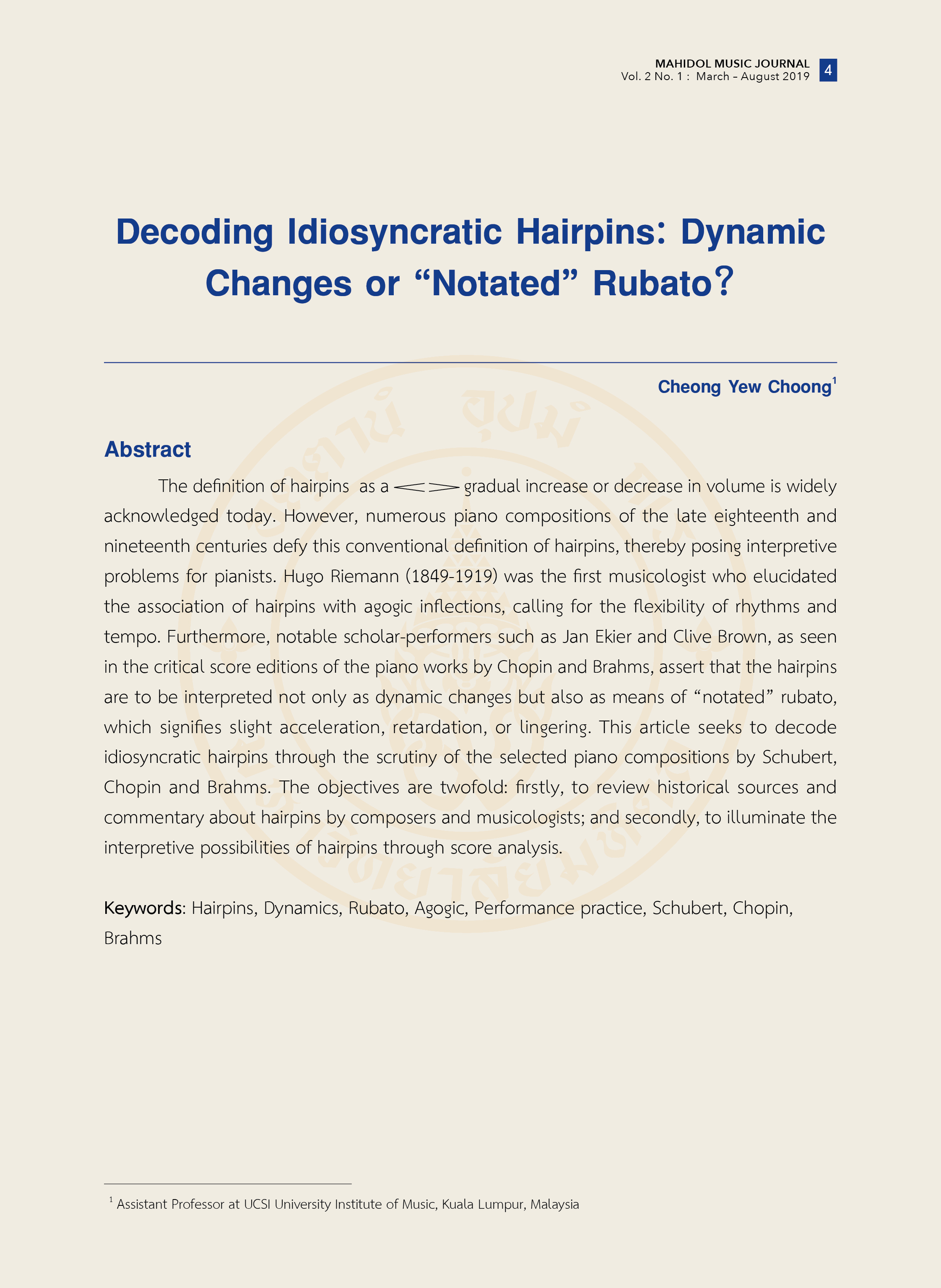Decoding Idiosyncratic Hairpins: Dynamic Changes or “Notated” Rubato?
Keywords:
Hairpins, Dynamics, Rubato, Agogic, Performance practice, Schubert, Chopin, BrahmsAbstract
The definition of hairpins as a gradual increase or decrease in volume is widely acknowledged today. However, numerous piano compositions of the late eighteenth and nineteenth centuries defy this conventional definition of hairpins, thereby posing interpretive problems for pianists. Hugo Riemann (1849-1919) was the first musicologist who elucidated the association of hairpins with agogic inflections, calling for the flexibility of rhythms and tempo. Furthermore, notable scholar-performers such as Jan Ekier and Clive Brown, as seen in the critical score editions of the piano works by Chopin and Brahms, assert that the hairpins are to be interpreted not only as dynamic changes but also as means of “notated” rubato, which signifies slight acceleration, retardation, or lingering. This article seeks to decode idiosyncratic hairpins through the scrutiny of the selected piano compositions by Schubert, Chopin and Brahms. The objectives are twofold: firstly, to review historical sources and commentary about hairpins by composers and musicologists; and secondly, to illuminate the interpretive possibilities of hairpins through score analysis.

Downloads
Published
How to Cite
Issue
Section
License
ลิขสิทธิ์ของบทความเป็นของเจ้าของบทความ บทความที่ได้รับการตีพิมพ์ถือเป็นทัศนะของผู้เขียน
กองบรรณาธิการไม่จำเป็นต้องเห็นด้วยและไม่รับผิดชอบต่อบทความนั้น


